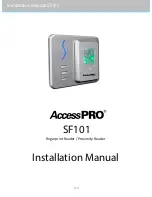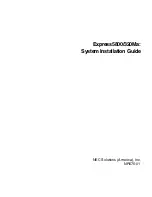
PCVisionplus
Hardware Reference
Registers
3–61
Rev 02; February 8, 2002
3.4.18 Alpha Control (ALPHA) R/W
0
7
BADR2 + 0x4C
Reserved
Reserved
Reserved
Reserved
Reserved
Reserved
Reserved
Reserved
8
15
Reserved
Reserved
Reserved
Reserved
Reserved
Reserved
Reserved
Reserved
PCP_ALPHA_32
16
23
Reserved
Reserved
Reserved
Reserved
Reserved
Reserved
Reserved
Reserved
24
31
Reserved
Reserved
Reserved
Reserved
Reserved
Reserved
Reserved
Reserved
This register must be initialized to zero for normal operation of the PCVisionplus image memory. Application pro-
grams must not write to this register.
3.4.19 LUT Programming
0
7
BADR2 + 0x40000–0x7FFFF
DATA7
DATA6
DATA5
DATA4
DATA3
DATA2
DATA1
DATA0
8
15
DATA15
DATA14
DATA13
DATA12
DATA11
DATA10
DATA9
DATA8
Low LUT Word Access
16
23
Reserved
Reserved
Reserved
Reserved
Reserved
Reserved
Reserved
Reserved
24
31
Reserved
Reserved
Reserved
Reserved
Reserved
Reserved
Reserved
Reserved
The Input LUT is a 16-bit in 16-bit out Look-Up Table. The 16-bit data written to this register is stored in the LUT.
The bit order is reversed at the LUT input. ADC output bit 11 is connnected to LUT input bit 0. The Oversample
Enable bit (OVRSM) controls the input LUT configuration, which has a great affect on how the LUT is programmed.
The Input Data Format bit (INMODE) controls how data is read from the LUT output, and packed and stored in the
image memory. The LUT must compensate for the data input format, bit ordering, and both OVRSM and INMODE
values.
With OVRSM=0 (oversample disabled), the Input LUT provides sixteen pages for 16-bit input addressing: 12 bits
from the ADC and four page select bits, as shown in Figure 3–10. You can load up to 16 different 12-bit data trans-
forms and use the page select bits ILUTSADR (input LUT static address) to change transforms without reloading.
With INMODE=1 (12-bit input mode) all 16 LUT output bits are read and stored as a WORD in the image buffer
memory, as shown in Figure 3–10. The LUT can be programmed for any point transformation, normalization, or data
shift. The user must be aware that the Bus Master Controller pad, zoom, decimate and byte shift modes assume valid
pixel data is positioned on bits 11 through 0. Bits 15 through 12 are usually treated as “don’t care” values, but may be
useful as tag values.
Artisan Technology Group - Quality Instrumentation ... Guaranteed | (888) 88-SOURCE | www.artisantg.com
















































